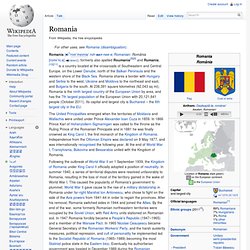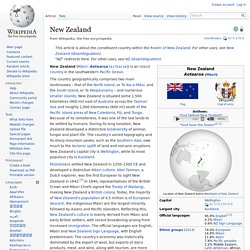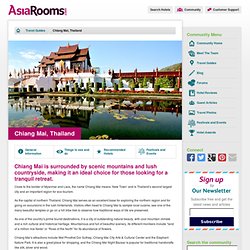

Russia. Country spanning Eastern Europe and Northern Asia Coordinates: 60°N 90°E / 60°N 90°E / 60; 90 Russia (Russian: Россия, Rossiya, Russian pronunciation: [rɐˈsʲijə]), or the Russian Federation,[c] is a transcontinental country spanning Eastern Europe and Northern Asia.

It covers over 17,125,191 square kilometres (6,612,073 sq mi), consists of more than one-eighth of the Earth's inhabited land area, extends to eleven time zones, and has borders with sixteen sovereign nations. Russia. Russia. Kremlin. Romania. Romania ( i/roʊˈmeɪniə/ roh-MAY-nee-ə; Romanian: România [romɨˈni.a] (

Romania. Romania. Romania. India. Taj Mahal. India. India. Italy. Venice. Pisa. New Zealand. New Zealand (Māori: Aotearoa [aɔˈtɛaɾɔa]) is an island country in the southwestern Pacific Ocean.

The country geographically comprises two main landmasses – that of the North Island, or Te Ika-a-Māui, and the South Island, or Te Waipounamu – and numerous smaller islands. New Zealand is situated some 1,500 kilometres (900 mi) east of Australia across the Tasman Sea and roughly 1,000 kilometres (600 mi) south of the Pacific island areas of New Caledonia, Fiji, and Tonga. Because of its remoteness, it was one of the last lands to be settled by humans. During its long isolation, New Zealand developed a distinctive biodiversity of animal, fungal and plant life.
The country's varied topography and its sharp mountain peaks, such as the Southern Alps, owe much to the tectonic uplift of land and volcanic eruptions. Polynesians settled New Zealand in 1250–1300 CE and developed a distinctive Māori culture. Etymology Detail from a 1657 map showing the western coastline of "Nova Zeelandia" History Art. NewZealand. New Zealand. New Zealand.
Tokyo. Tokyo (東京, Tōkyō?

, "Eastern Capital") (Japanese: [toːkʲoː], English /ˈtoʊki.oʊ/, listen ), officially Tokyo Metropolis (東京都, Tōkyō-to?) ,[5] is one of the 47 prefectures of Japan.[6] Tokyo is the capital of Japan, the center of the Greater Tokyo Area, and the most populous metropolitan area in the world.[7] It is the seat of the Japanese government and the Imperial Palace, and the home of the Japanese Imperial Family. Tokyo is in the Kantō region on the southeastern side of the main island Honshu and includes the Izu Islands and Ogasawara Islands.[8] Tokyo Metropolis was formed in 1943 from the merger of the former Tokyo Prefecture (東京府, Tōkyō-fu?)
And the city of Tokyo (東京市, Tōkyō-shi?). Tokyo is often referred to and thought of as a city, but is officially known as a "metropolitan prefecture", which differs from a city. The Michelin Guide has awarded Tokyo by far the most Michelin stars of any city in the world.[15][16] Etymology[edit] History[edit] 1869–1943[edit] Ginza area in 1933.
Tokyo. Tokyo. Tokyo. Madrid. Madrid (English /məˈdrɪd/, Spanish: [maˈðɾið]) is the capital of Spain and its largest city.

Madrid. Madrid. Madrid. Madrid. Paris. Louvre. Eiffel Tour. Louvre. Arc du Triomphe. Pont-a-Mousson. Pont-à-Mousson (French pronunciation: [pɔ̃.ta.mu.sɔ̃]) is a commune in the Meurthe-et-Moselle department in north-eastern France.

Population (1999): 14,592 (Mussipontains). It is an industrial town (mainly steel industry), situated on the Moselle River. Pont-à-Mousson has several historical monuments, including the 18th century Premonstratensian abbey. Demographics[edit] History[edit] Early Modern[edit] In 1572 Cardinal Charles of Lorraine established a Jesuit university at Pont-à-Mousson. During the seventeenth century the university grew rapidly until there were about 2,000 students. 18th and 19th centuries[edit] The town continued to flourish as a centre of the visual arts, however, rivalling Épinal to the south in this respect. It was the regional capital between 1790 and 1795, but underwent extensive destruction in the ensuing wars, and was subject to foreign occupation in 1814 and 1815. 20th century[edit]
Pont-a-Mousson. Pont-a-Mousson. Pont-a-Mousson. Yi Peng Festival. Close to the border of Myanmar and Laos, the name Chiang Mai means ‘New Town’ and is Thailand’s second largest city and an important region for eco-tourism.

As the capital of northern Thailand, Chiang Mai serves as an excellent base for exploring the northern region and for going on excursions in the lush hinterlands. Visitors often head to Chiang Mai to sample local cuisine, see one of the many beautiful temples or go on a hill tribe trek to observe how traditional ways of life are preserved. As one of the country’s prime tourist destinations, it is a city of outstanding natural beauty, with cool mountain climate and a rich cultural and historical heritage. Mountainous and full of beautiful scenery, its different monikers include “land of a million rice fields” or “Rose of the North” for its abundance of flowers. Chiang Mai’s attractions include Wat Phrathat Doi Suthep, Chiang Mai City Arts & Cultural Center and the Elephant Nature Park. Google + Yi Peng Festival. Yi Peng Festival. Yi PEng Festival.